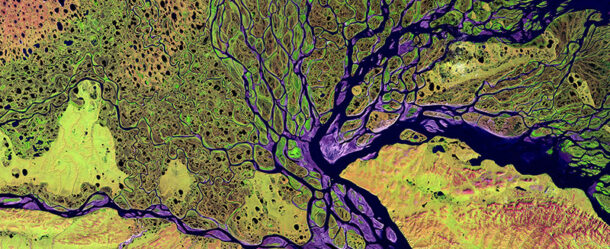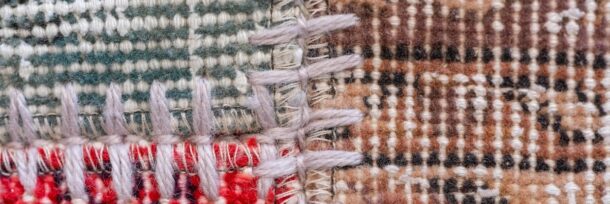Explore the powerful stories and works showcasing Sikh resilience in the legacy of the 1984 genocide.
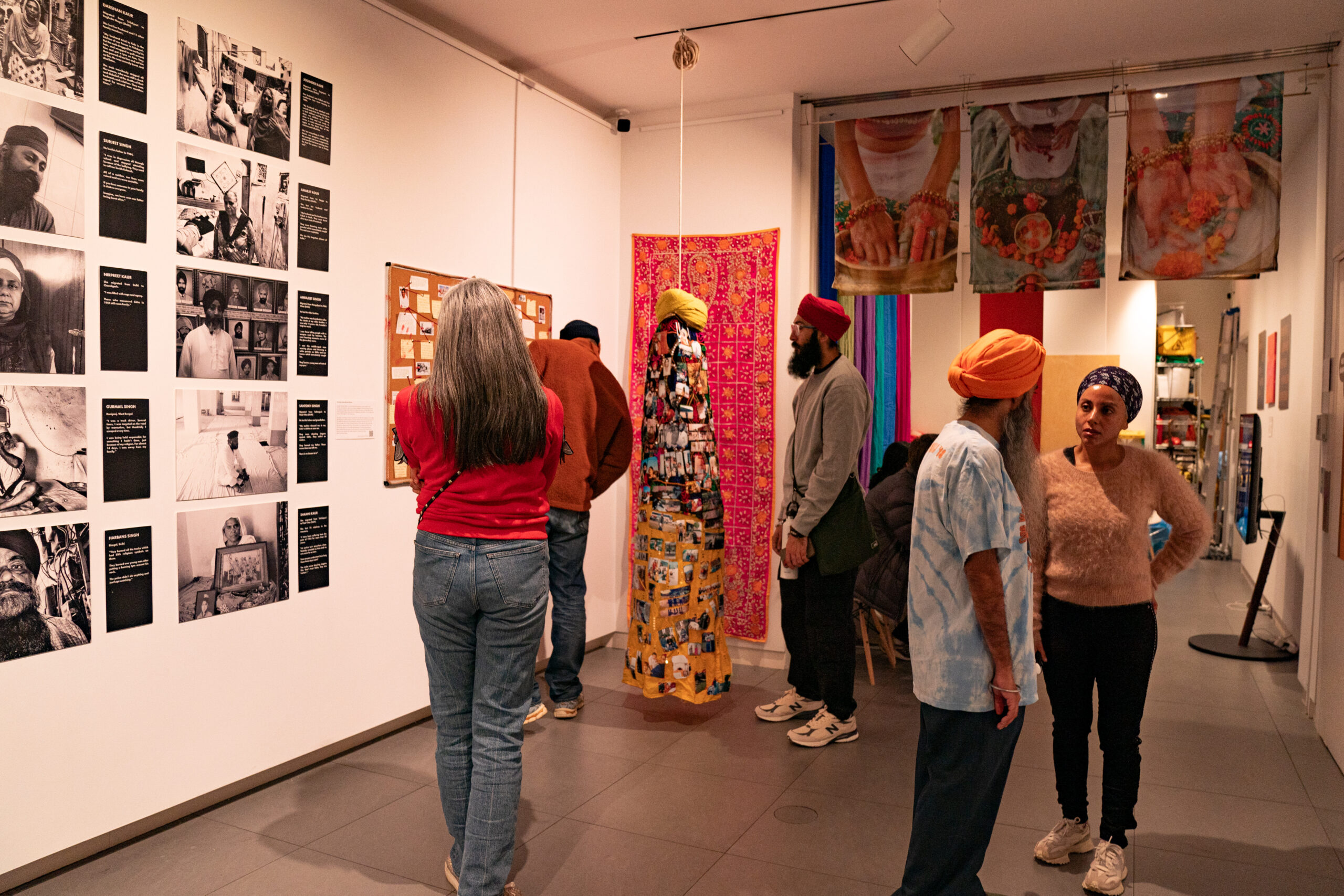
‘Nineteen Eighty Four’ for many in the west brings to mind the fictional dystopian world authored by British Novelist Goerge Orwell. 1984 or ‘Uni Sau Chaurasi’ for Sikhs around the globe is etched as a real life dystopia of genocidal violence in India.
From October 31st to November 9th, the exhibit, 40 Years Later: Art Resilience and the Legacy of 1984 was held at Jutta gallery in downtown Manhattan, New York City. This exhibit created a space for the voices of those who lived through this carnage, who lost family members, who carry the generational pain and trauma of this genocide.
The exhibit welcomed approximately 500 guests (approx. 375 Sikhs to 125 Non-Sikhs) and featured creative works of 13 artists and activists. The works of the exhibit are now catalogued online in the form of a virtual exhibit.
We invite you to explore and reflect on these artworks through the gallery, and to act — by sharing these works with your communities and by standing up for human rights wherever you are.
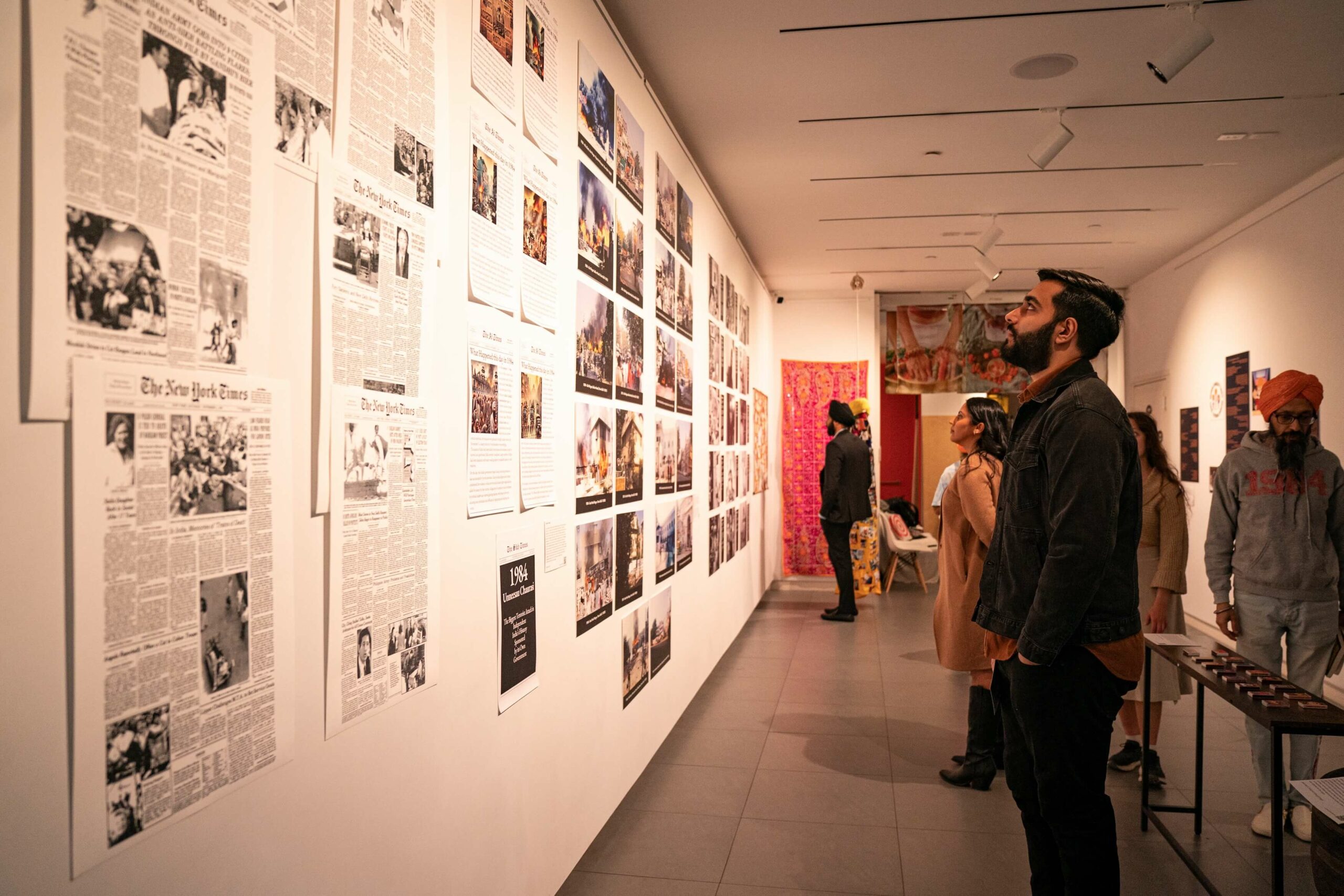
“Attending the exhibit was a profound experience that allowed me to connect with our history in a way I never had before. Growing up hearing about the atrocities of 1984, I realized how much of the depth and emotion I had missed until I stood in front of the carefully curated family photographs and listened to the powerful testimonies of survivors. The exhibit masterfully captured the raw pain, unyielding resilience, and the untold stories of that tragic time, honoring the memory of those lost while illuminating the indomitable Sikh spirit of survival and resistance. I left feeling deeply moved, forever changed, and full of admiration for the enduring strength of the Sikh community.”
The exhibit was warmly received, and a number of guests came forward to share their own personal and family experiences in 1984 – some reconnecting with these stories for the first time in many years. These experiences ranged from cities of Delhi, Ranchi, Jamshedpur, multiple cities across the state of Uttarakhand and railroads across India.
“The 1984 exhibit at Jutta Gallery was painful to view. It was close to my heart as the state-sponsored violent attack had directly impacted my family. The phone exhibit where Sikhs spoke about the genocide was powerful, as was the matchbook art of the perpetrators of the violence. The stark reminder of the implements used to attack Sikhs was traumatic to view. The exhibit is important for all to remember and learn how quickly citizens can become disenfranchised, targeted, and murdered to see revenge by the state and its henchmen.”
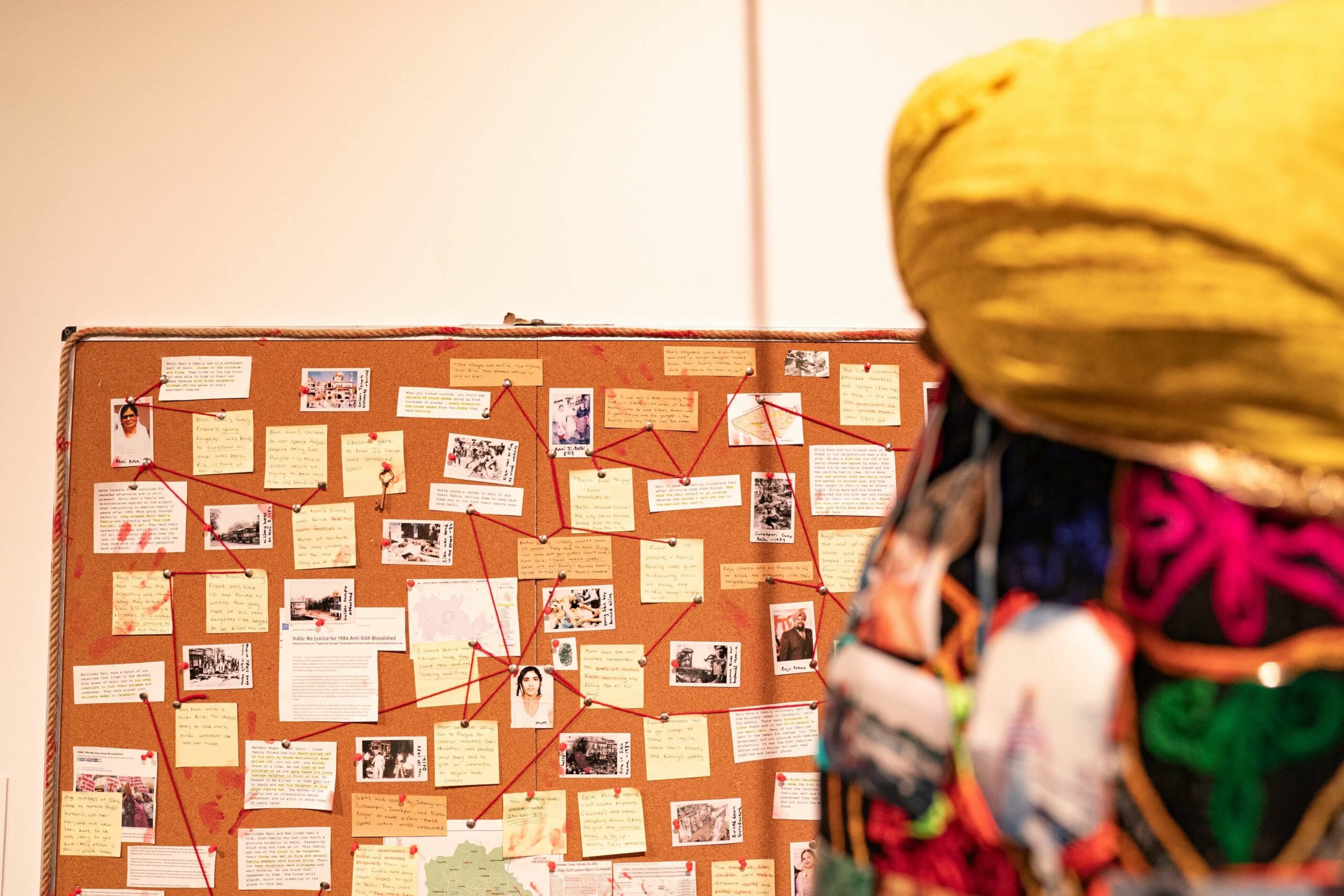
The exhibit was recognized with citations from the second highest elected office in NYC, the Public Advocate Jumaane Williams. Citations were given to ICAAD, Sikh Coalition, Vishavjit Singh as the main partners behind the hosting of the exhibit. Two human rights advocates focused on 1984 in India, Harvinder Singh Phoolka and Sanam Sutirath Wazir (who was a guest speaker at the exhibit along with photos from his Amnesty International report being part of the exhibit) also received citations for their work. Ten artists whose works were part of the exhibit will also be honored with citations.
The most important citation was given to The Kaurs of 1984, mothers and grandmothers who lost family members in 1984, some of whom faced direct assault as well, but who went on to nurture and support the next generation. The citation was accepted in person by Sanam Sutirath Wazir, author of the book The Kaurs of 1984.
“In times like these, with so much conflict, it is possible to focus on the present and forget the tragedies of the past. Exhibitions like this are a stark and important reminder of what happened in the not so distant past and the deep wounds that continue to reverberate across the hearts and minds of people; it is important to recognize and honor these feelings and show solidarity. I hope that many people get to see this exhibition in the future and learn from it.”
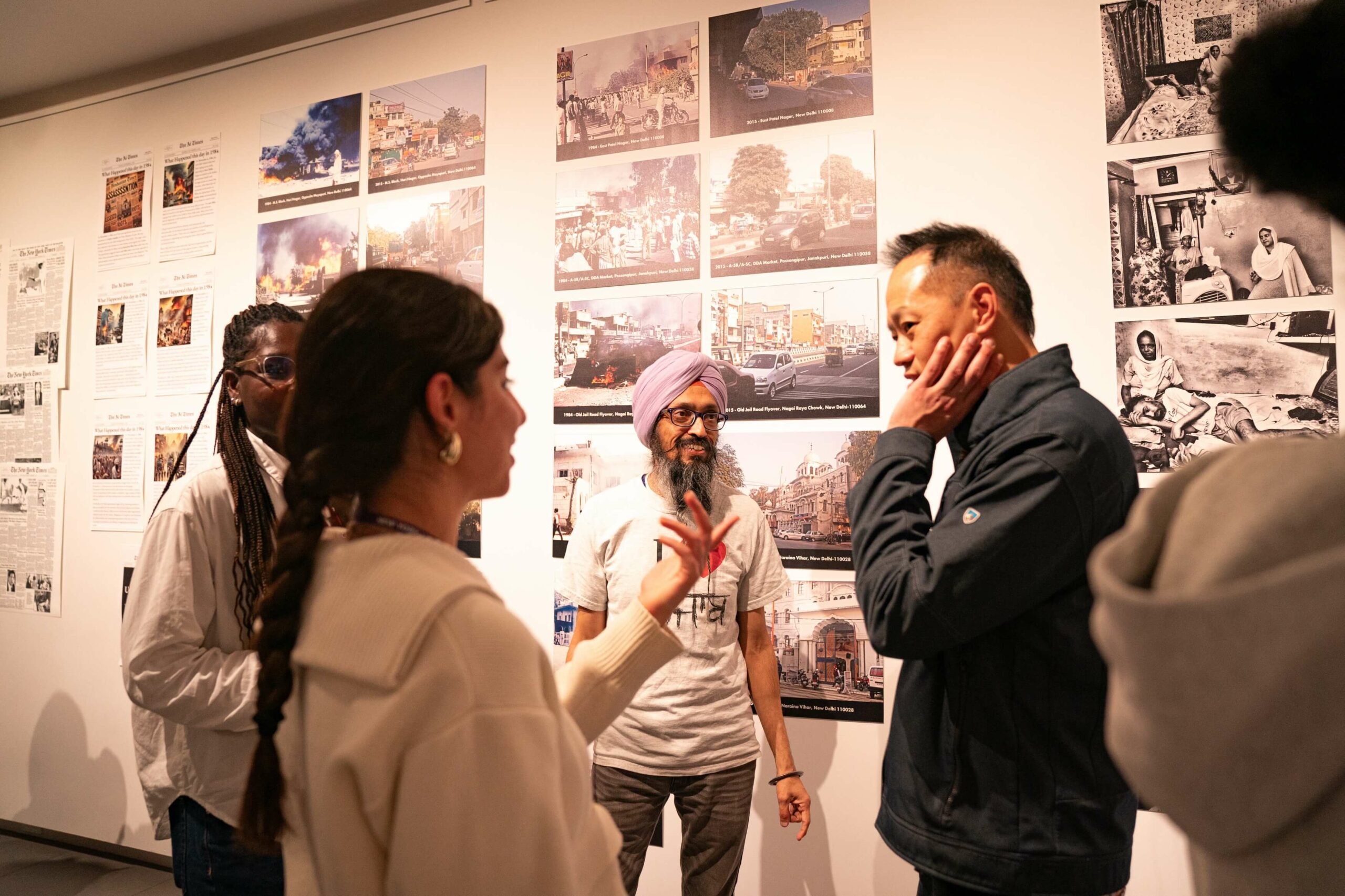
More than a few times guests asked what we envision next for the exhibit, and there was clear evidence from the guest reception and comments for this exhibit that there is a desire for it to continue for a longer period of time in NYC, and for it to travel across the nation.
“The multimedia pieces—ranging from poignant illustrations to rare photographs—captured not only the atrocities of that dark chapter in history, but also the enduring strength and resilience of the Sikh community. It’s healing to see how far we’ve come in reclaiming our voices. I was especially moved by the discussions on how the genocide’s legacy continues to impact us today, as well as the ongoing struggle against transnational repression faced by Sikhs worldwide. I am grateful for the opportunity to witness such an important moment in history being commemorated with such respect, creativity, and dignity.”

